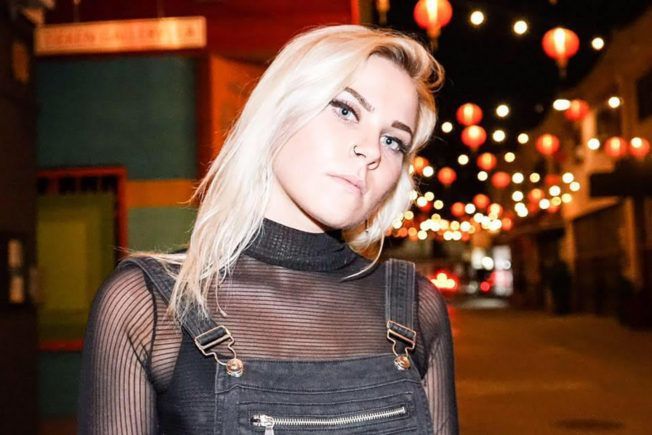This month’s student spotlight introduces you to Kendoll. This ICON graduate is a rising star in the Los Angeles house music scene with her UK-influenced bassline/garage tracks.

Introducing Kendoll
2019 is already turning out to be a huge year for ICON graduate Kendoll. After moving down from Seattle and immersing herself in the thriving Los Angeles house music scene, her energetic catalogue of UK-influenced bassline/garage tracks has been gaining attention fast.
She just released on Dr. Fresch’s new label ‘The Prescription Records’ and has an EP coming out on her favorite label (not yet announced). She also played Night Bass’ 5th-anniversary party, got added to Insomniac’s ‘Beyond Wonderland’ festival lineup, and has a packed schedule of Miami Music Week parties. Keep an eye out for this one!
Kendoll Interview
In this short interview, Kendoll talks about her music and musical influences. She also shares positive lessons learned studying music production at ICON and her continued learning post-ICON. Last, Kendoll offers advice for up-and-coming artists.
1. What got you into the bassline/UK house music scene? When and where did you get hooked?
I originally was a dubstep DJ when I was about 16 or 17. Then one day I was browsing through YouTube. I found Jack Beats and AC Slater back in the ‘Party Like Us Records’ days, and it was game over from there. I also love the exciting mixture of bass and four on the floor bounce as I have been a techno fan for a while.
2. Outside of the technical stuff, what are some of the biggest lessons you took away from ICON?
One of the biggest lessons I’ve learned from ICON has been to not play by the technical book too much. Creativity is endless, and you have to allow yourself to take chances and risks. Think outside of the box! There’s so much music out these days and breaking the rules will make your music stand out. Also, take care of your mental health. Take a break, read a book, go for a run, write in your journal, etc. If you’re not right in your head, your music won’t be either.
3. What’s the latest plugin or production technique that’s been a game-changer for you?
Oh man, I’ll have to name a few. There’s this plug-in called Turnado by Sugar Bytes. It’s an effect rack with endless choices you can use to resample sounds, create build-ups, and make interesting sounds. I am a resample queen; I also love Manipulator from Infected Mushroom. Sometimes I’ll throw it on the bass, loop it, and resample it. I’ll also mess around with the parameters to create a long audio file I can pull pieces from on the side of my project. It’s a great way to create original sounds and let your creativity flow. TRASH BY IZOTOPE IS FANTASTIC TOO!
4. How are you continuing your learning post-ICON?
I have been growing with my music by doing it every single day. It doesn’t feel like a task; it’s my favorite thing to do on the planet. I also learn with trial and error and endless practice. Moreover, you have to know how to bounce back from rejection and make an even better track. Let the rejection motivate you.
Also, working with other people is insanely useful. This year, I’ve opened myself up more to working with other artists. Literally every session I have with someone different, I learn a cool new trick to add to my bag of tricks.
5. What advice would you give to your younger self from one year ago?
Take care of yourself, stay active, and stay healthy. Also, create a routine that allows you to remain right in your head, so you don’t get frustrated making music. I would also tell myself to watch out for contracts and to be wary of the music business side. That can negatively affect your music on occasion. I know contracts can be exciting and open new opportunities. But, always consult a mentor or a professional. Also, take a slow approach to these new opportunities.
Connect with Kendoll

Turn your passion for music into a Profession: Learn more about our Music School Programs!
MORE ARTICLES FROM THE ICON BLOG

FIND YOUR SOUND, HONE YOUR CRAFT:
Are you ready to turn music into a career? ICON prepares students to become music producers, composers, performers, recording artists, professional DJs, and entrepreneurs in the entertainment industry. Click below to get information about our award-winning programs:

